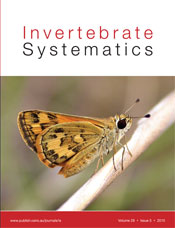IS14037Groundwater oligochaetes show complex genetic patterns of distribution in the Pilbara region of Western Australia
Understanding the distribution of unique groundwater fauna in the Pilbara region of Western Australia is important for conservation efforts. This study examined the geographic patterns of oligochaetes using genetic techniques, and found several species that appeared to be widespread, not restricted by hydrology. This is in contrast to other fauna in the region, and suggests that physical characteristics may play a role in dispersal.




